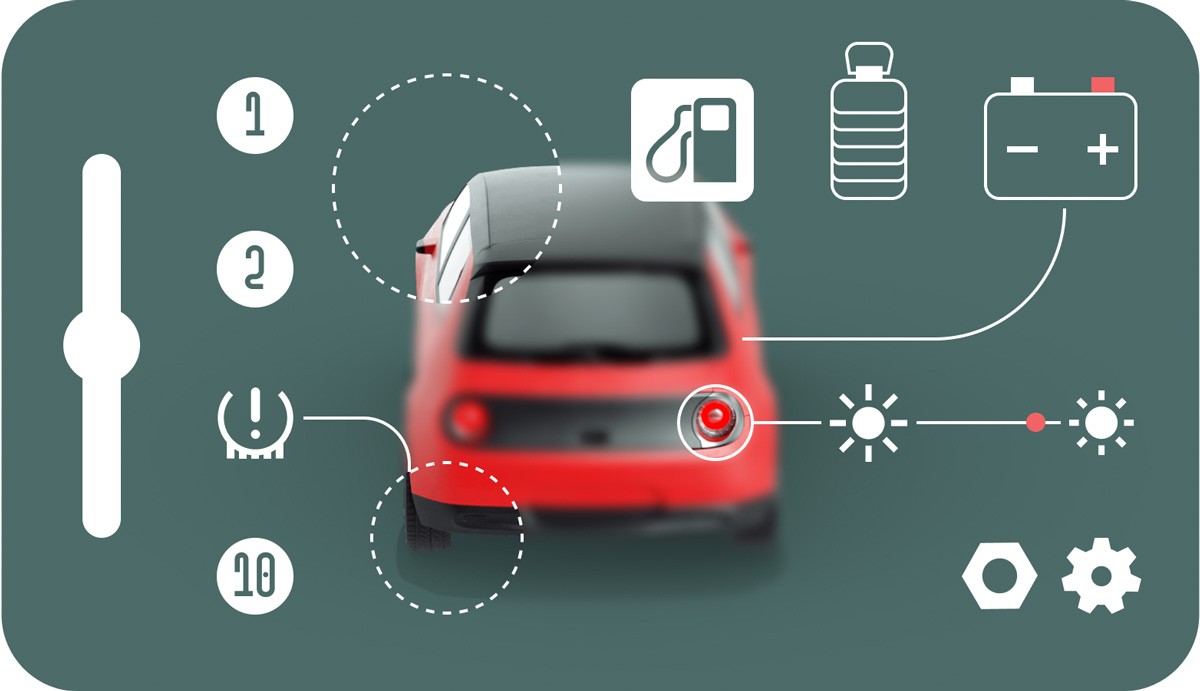
How to make sure your car is ready to drive
It's true: DST is fast approaching and gas prices are at their lowest point in parts of the country for a decade. It's time to travel with friends and family.
Whether you want to make a short trip of a couple of hundred miles or drive across the country and back, you need to make sure your vehicle is in top condition so you can arrive and return safely with a minimum of hassle and/or traffic problems. You also need to be prepared to travel in case something goes wrong on your journey. To do this, always leave room in your budget for certain repairs – no matter how new or reliable your car is.
Read the information below to learn how to carry out routine checks on your vehicle to make sure you're ready for a safe adventure.
Part 1 of 1. Do a lot of important routine vehicle inspections before you leave.
Step 1: Check engine fluids and filters. The first thing you should do is check your engine fluids. Verify:
- radiator fluid
- Brake fluid
- Machine oil
- Transmission fluid
- Wiper
- Clutch fluid (manual transmission vehicles only)
- Power steering fluid
Make sure all fluids are clean and filled. If they are not clean, they must be replaced along with the appropriate filters. If they are clean but not full, top them up. If you need help locating the fluid reservoirs, please refer to your vehicle owner's manual.
Step 2: Check belts and hoses. While you're under the hood, check the condition of any belts and hoses you see and inspect them for wear and leaks.
If you notice anything that appears to be worn or deteriorating, consult a professional mechanic and have any belts or hoses replaced before you travel.
Step 3: Check the battery and terminals. Check the battery with a voltmeter if you don't know how old it is or if you think it's draining.
Depending on how long your trip will be, you may want to replace the battery if the charge drops below 12 volts.
Check the battery terminals for corrosion and clean them with a simple solution of baking powder and water until they are completely clean. If the terminals are damaged and worn, or if there are exposed wires, replace them immediately.
Step 4: Check tires and tire pressure.. Be sure to check the condition of your tires before driving.
If you have tears or bulges in the sidewalls, you will want to get new ones. Also, if the tire tread is worn out, you will also need to replace it.
It depends on how long of a ride you're gearing up for - and if your ride is going to be long, you'll want at least 1/12" tread.
Check tire tread depth with a quarter:
- Insert the inverted head of George Washington between the tracks.
- Tires need to be changed if you can see the top of his head (and even some of the text above his head).
- The smallest amount of tread you want to leave on your tires is about 1/16 inch. If less, no matter how long your ride will be, you should change your tires.
Check the tire pressure and make sure the pounds per square inch (PSI) reading matches the information posted on the driver's side door jamb. Make sure you pay attention to the number that corresponds to specific weather conditions as they are relevant to the current weather situation and fill your tires accordingly.
Step 5: Check the brake pads. If you are not sure about the condition of your brake pads or need help determining if they need to be replaced, have a mechanic have them checked. Let them know more about your trip and how far you plan to travel.
Step 6: Check the air filters. The engine air filter provides the engine with clean air for optimal performance and can also affect fuel efficiency.
If the filter is torn or looks particularly dirty, you may want to replace it. Also, if your cabin air filters are dirty, you can also replace them to ensure quality air in your car while you drive.
Step 7: Check All Lights and Signals. Make sure all your lights and signals are in good working order.
You can get stuck in a high traffic situation where signaling and braking are important to alert other drivers around you to your intended movements.
It's helpful to have a friend around at this point to make sure everything works while you're manipulating the controls. If any light is off, replace it immediately.
Step 8: Make Sure You Pack Properly: Make sure you don't overload your vehicle by checking the vehicle's load capacity listed in your owner's manual.
On some makes and models, the maximum payload number is located on the same tire pressure decal located on the driver's side door jamb. This weight includes all passengers and luggage.
If you are traveling with children, make sure you have all the necessary entertainment equipment to keep them busy along the way, as well as enough food and water for the trip.
If you are not comfortable with the above checks, call a professional mechanic from AvtoTachki to inspect or service your vehicle before you start your trip. One of our best mechanics will come to your home or office to service your vehicle.
